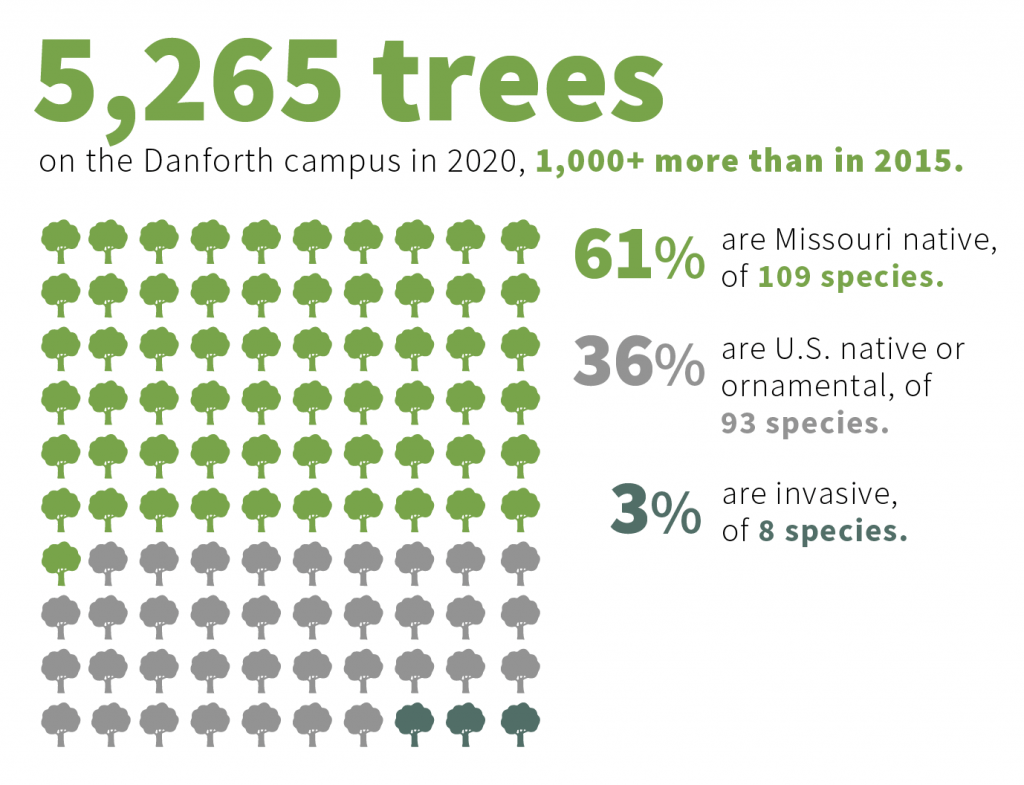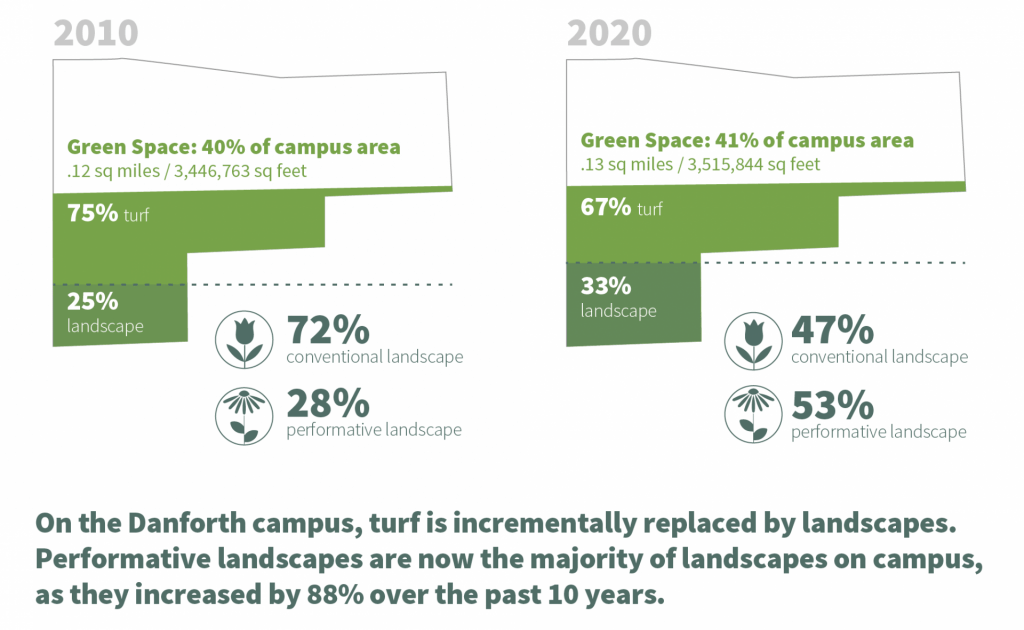
Washington University in St. Louis’ goal is to foster human and environmental health through low impact, resilient landscapes that provide an array of ecosystem services.
2015 Strategic Plan for Sustainable Operations
Objectives & Progress
Tree Canopy and Diversity | On Track
The Danforth Campus developed a Tree Framework Plan in 2013 that guides the university’s goal to double the campus tree canopy and expansion of tree species diversity over the next 20 years. With aggressive planting and the addition of the East End landscapes, the university is on track to meet or exceed the canopy expansion goal by the 2035 deadline. Nearly 2,000 trees have been planted since 2013, with a net gain of 1,088 trees.
In 2013, 12 tree species comprised over 50% of the trees on campus. To increase campus tree biodiversity, the Tree Framework Plan established the goal to reduced the 12 common tree species to below 30% of the species mix by 2035. In other words, by 2035, more than 70% of campus trees will be less common, more biodiverse species.
Performative Landscape | Achieved
The Danforth Campus, which has long been known for its beautiful park-like landscapes and iconic tree allees, is integrating native and adaptive plantings as a standard practice when new landscapes are designed and others are updated. New and renovated “performative landscapes” seek to maximize a wide variety of ecosystem services, often including one or more of the following: expanded biodiversity through habitat creation, management and filtration of stormwater, reduced urban heat island effect, sequestration of carbon dioxide emissions, and more.
Sections of turf grass have been replaced with native and adaptive planting beds that require little or no irrigation and reduce the need for mowing. Rain gardens and bioswales have been installed in many drainage zones to slow and filter stormwater. In 2010, we had 2,590,947 square feet of turf. In 2019 with the completion of the east end transformation, we converted 202,063 square feet of roads and parking lots to turf and landscape, significantly increasing the ability to hold stormwater on campus. Overall, turf has been reduced by 10%, much of which has been replaced by more performative, biodiverse landscapes. 27% of the east end green space is performative landscape, with nearly 74K native plants being planted in 2019 alone.
The majority of plant material installed since 2017 has been native to Missouri. Most significantly, for the East End Transformation in 2017, 89% of the plant material was native. This installation was 12 times the average annual plantings, with 73,769 native plants sourced.
Though the School of Medicine has a much smaller portion of green space, recent projects prioritize similar outcomes and have transformed the landscapes across the medical complex.
Highlights
Green Infrastructure
Performative Landscapes
Trees
Grounds Management
Landscape Partners
We would like to acknowledge and thank our campus partners who are instrumental in implementing and carrying forward the vision displayed on this page. The partners listed below have and continue to be committed to achieving the goals for sustainable dining on the WashU campuses.


